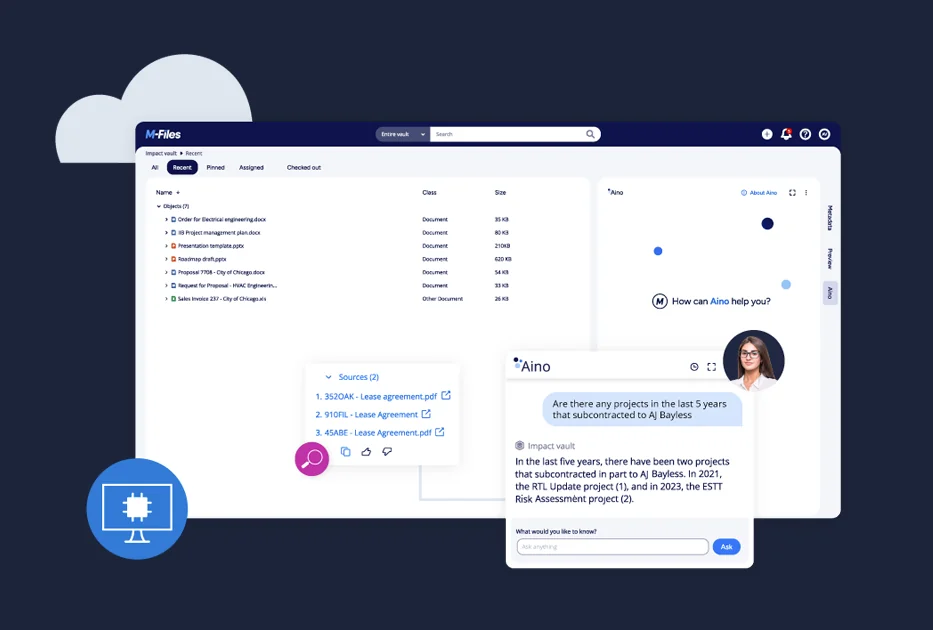Three Ways to Boost Your Microsoft 365 Investment

Microsoft 365 (formerly Office 365) is the undisputed leader in the digital productivity market, with more than 80 percent of the global share in productivity software. Familiar names like Microsoft Excel, Microsoft SharePoint, Microsoft OneDrive, Word, and PowerPoint are hard-baked into the everyday foundations of most any office.
While Microsoft 365 offers a wide array of powerful productivity tools that are easy to use, the very best benefits of the suite can also create problems down the road.
As Microsoft 365 tools continue to improve and become even easier to use, the challenge to manage the resulting output effectively and efficiently can paradoxically create new productivity challenges. The risks of document sprawl, siloed information, and compliance gaps only grow as it becomes easier for any knowledge worker to quickly create, duplicate, and share content.
Forward-thinking organizations can leverage the power of a knowledge work automation platform to augment the power of Microsoft 365, secure information processes, and ensure compliance without sacrificing the productivity benefits of the overall software investment. Here's how:

Eliminate information chaos
As organizations grow, information grows. As information grows, information sprawls. The result? Knowledge workers often struggle to find the right information in an ocean of data spread across disconnected data repositories, including Microsoft SharePoint and Microsoft OneDrive, as well as non-Microsoft systems.
An astounding 56 percent of surveyed organizations say their document management systems don't connect with other systems in place.
While Microsoft provides powerful data storage and management tools, Microsoft 365 doesn't include an out-of-the-box plan or policy mapping how information is managed. Documents get duplicated, version control fails, and access management can't adjust to the chaotic change. Knowledge workers waste time finding the right information, get frustrated, and "re-invent the wheel," with their own storage schemes, leading to poor productivity.
A knowledge work automation platform connects Microsoft and non-Microsoft systems to create a single source of truth over enterprise data. It also features search capabilities to help find information based on what it is rather than where it is, as well as enabling control over document access, versions, publishing, and distribution.
Streamlining workflows in Microsoft SharePoint
Microsoft's cloud document management software, Microsoft SharePoint, helps streamline workflows and maximize productivity. Microsoft SharePoint integrates with automation software, so organizations can design, deploy, and manage workflows more effectively.
Integrating a knowledge work automation platform creates a supercharged electronic document system, using AI for file sharing and content management in the cloud.
Automating workflows in Microsoft Teams
Microsoft Teams is a powerful tool to super-charge collaboration, offering an array of add-on automation software. The platform facilitates collaboration, enabling real-time communication and ensuring teams always work with the latest information.
Microsoft Teams is a crucial tool in a functioning automated workplace because it shapes a productive work environment. Integrating automated workflows with Microsoft Teams leverages advanced features such as AI-powered customizable workflows. This enhances efficiency in knowledge work.









